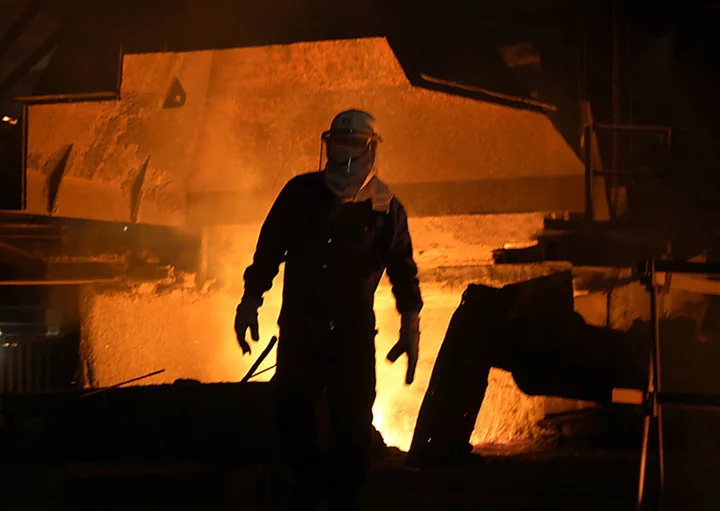Tata Steel Ltd. says it won’t be able to achieve a goal to cut emissions by 2030 unless development of new technologies is accelerated.
India’s second-largest steel producer is seeking to trim emissions from the current 2.5 tons of carbon dioxide for every ton of the alloy produced to 1.8 tons in 2030, and achieve net zero by 2045. That’s even as it plans to double its Indian capacity to 40 million tons by the end of the decade.
“New technologies have to come in,” Debashish Bhattacharjee, vice president of technology and research and development at Tata Steel, said in an interview this week. The company is relying on use of scrap metals to cut emissions for now, he said.
Tata’s warning comes as global steelmakers face massive costs to green their operations. The European Union is planning to implement taxes on supplies from high emission-producing countries, potentially hitting profitability of mills struggling to reach net zero targets.
Expectations that production costs will rise due to the newer technologies will also prove to be a challenge to steelmakers, Bhattacharjee said. The exact amount will depend on factors including the cost of scrap and hydrogen, the ability to generate profits from other products generated from carbon dioxide, and potential new carbon taxes, he said.
Read More: What It Would Take to Make Steelmaking Greener: QuickTake
The global steel industry is experimenting with several decarbonization techniques, all of which are at an early stage of development. One of the most promising involves replacing coal with green hydrogen, which is made using renewable power.
However, limitations in the use of hydrogen and scrap in the steelmaking process, coupled with low quality domestic iron ore, could hamper decarbonization efforts, Bhattacharjee said.
“If the world largely moves to hydrogen-based direct reduced iron and electric arc furnaces, then high quality ore will be at a premium — it’s already a premium, it will be more so,” he said. “So there is a huge economic risk that we see if you go entirely in that route, even if the electricity and hydrogen is green.”
Two Options
Tata Steel is looking at two options for its integrated plants: initial use of natural gas to be replaced by hydrogen in its blast furnaces, and carbon capture, utilization and storage.
Carbon capture and sequestration may also not be a scalable option as companies will need specific geographical formations to store the emissions either under the sea or in caverns. No such geological formations have been discovered close to eastern India where Tata Steel’s plants are located, according to Bhattacharjee.
“So our philosophy is to work on multiple streams because there is no single answer,” he said. All new technologies will need money for development and policy interventions from the Indian government to help accelerate implementation at scale, he said.

